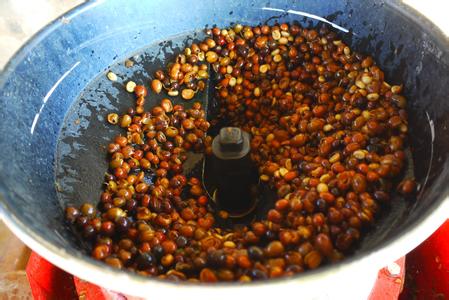Flavor characteristics of Costa Rican Yellow Honey Coffee A brief introduction to the region produced by price treatment
Flavor characteristics of Costa Rican Yellow Honey Coffee A brief introduction to the region produced by price treatment
Honey treatment keeps the coffee clean after washing, and although the brightness of the coffee decreases, it increases the sweetness and caramel taste. According to the degree of honey treatment, honey-treated coffee can be divided into yellow honey treatment, red honey treatment and black honey treatment.
In the treatment of raw coffee beans, Costa Rica's Meil treatment (also known as honey treatment) has its own characteristics. Lao Li also recently got the beans treated with Costa Rican red honey and came to supplement the unique method of Costa Rican Meil processing.
Costa Rica is the country where coffee was first introduced into Central America. It has a long history and has a complete coffee organization from production to marketing system. Because it is located in the Central American Gorge, there are many volcanoes, it has the natural advantages of sunshine and land, and the climate is reconciled by Pacific and Atlantic currents and sea breezes at the same time, the coffee produced has the characteristics of local micro-climate and soil conditions, in terms of quality and quantity, Costa Rican coffee has always been recognized by the world, and has been rated as one of the world-class high-quality coffee. Costa Rican coffee has been cultivated for two hundred years. It was first planted on the slopes of the Poas and Barva volcanoes, today known as the Central Valley (Central Valley). The seven main coffee producing areas are from northwest to southeast, along with the inland central plateau.
Huang Kaduai, a hybrid of New World and Kaddura, was first bred by INSTITUTO AGRONOMICO DE CAMPINAS, a Brazilian agricultural research institute, in 1949. Huangkaduai, like Red Kaduai (Red catuai, Catuai rojo), has extremely high disease resistance and is suitable for planting in high altitude and windy areas. Both CATUAI also have a delicate and clean sour taste. Through the adjustment of the machine, coffee treated with red honey and yellow honey is produced (depending on the degree of honey treatment). CANET is located at the highest altitude where TARRAZU coffee is grown in Costa Rica. This area is the most intensive fruit-growing area in Costa rica. the manor owners mainly grow passion fruits, while the amount of coffee is quite rare. only one specific area grows coffee and takes special care to pick only ripe red cherries. Yellow honey treatment is to remove the peel of coffee cherries, leaving 40% of the sticky pulp, then drying, and then removing the pulp layer and pectin layer.

Important Notice :
前街咖啡 FrontStreet Coffee has moved to new addredd:
FrontStreet Coffee Address: 315,Donghua East Road,GuangZhou
Tel:020 38364473
- Prev

El Salvador Himalayan Coffee Flavor description by hand method
El Salvador Himalayan Coffee handmade Flavor description production area El Salvador is washed beans, medium and shallow roasted, mild and gentle, smooth entrance, sweet and sour and mellow thickness are very regular, and do not have very prominent flavor characteristics, so they do not leave much impression. But the flavor of tanning El Salvador becomes very recognizable and surprising.
- Next

Introduction to the flavor description method of brewing method for the characteristic taste of Yejiaxuefei coffee
This kind of coffee with slightly sour taste is suitable for people who like not to cause a burden on the taste, and the representative producing areas are: * Ethiopia: unique aromas of peach and blueberry or red wine, as well as fresh taste, the most widely known. * Luanda: Cherry aroma
Related
- Detailed explanation of Jadeite planting Land in Panamanian Jadeite Manor introduction to the grading system of Jadeite competitive bidding, Red bid, Green bid and Rose Summer
- Story of Coffee planting in Brenka region of Costa Rica Stonehenge Manor anaerobic heavy honey treatment of flavor mouth
- What's on the barrel of Blue Mountain Coffee beans?
- Can American coffee also pull flowers? How to use hot American style to pull out a good-looking pattern?
- Can you make a cold extract with coffee beans? What is the right proportion for cold-extracted coffee formula?
- Indonesian PWN Gold Mandrine Coffee Origin Features Flavor How to Chong? Mandolin coffee is American.
- A brief introduction to the flavor characteristics of Brazilian yellow bourbon coffee beans
- What is the effect of different water quality on the flavor of cold-extracted coffee? What kind of water is best for brewing coffee?
- Why do you think of Rose Summer whenever you mention Panamanian coffee?
- Introduction to the characteristics of authentic blue mountain coffee bean producing areas? What is the CIB Coffee Authority in Jamaica?

